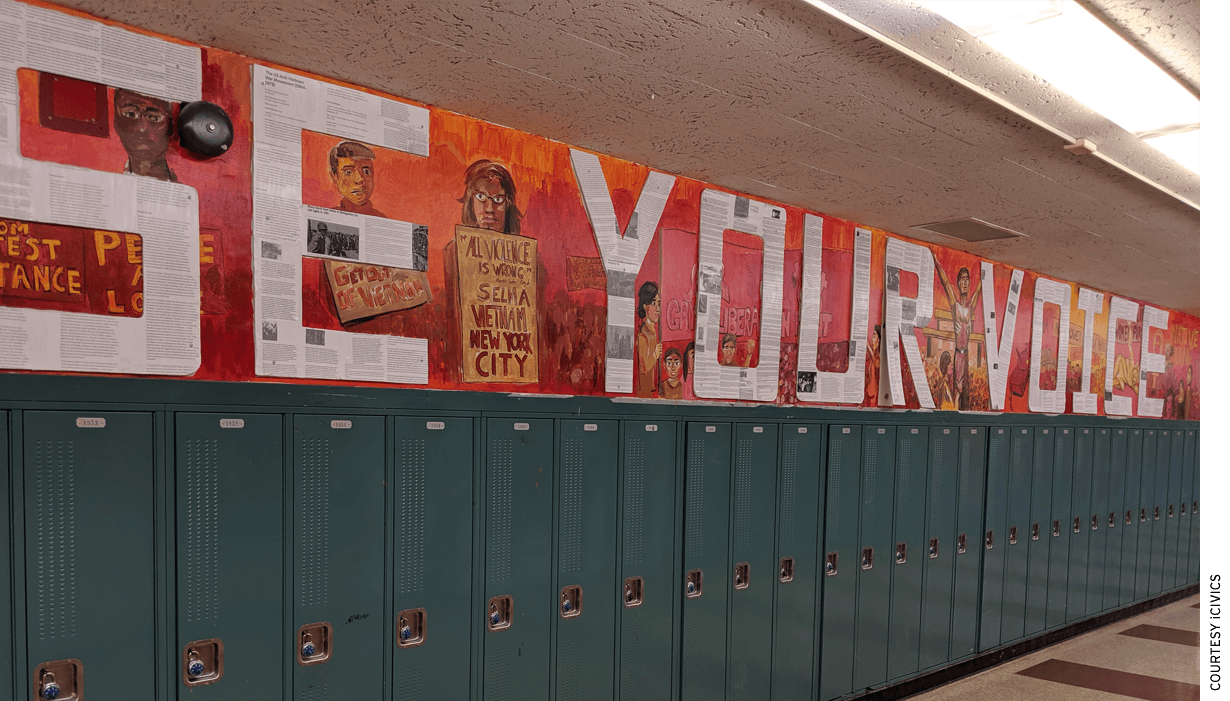
The term “education reform” can conjure visions of top-down testing mandates. Even some supporters have abandoned the term.
Yet our current system is not adequately preparing students for life beyond school. Perhaps, then, it’s time to rethink how we’re going about education reform. Perhaps we should look instead to a holistic model that includes teachers, students, and communities, focusing on relationships and data. Where many of us look to address the current shortcomings of democracy through education, we may well also fuel education through democracy.
That’s exactly what happened at George Washington High School, a public school in Chicago.
Less than a decade ago, Washington High was designated a Illinois Priority School, struggling because it had ranked in the bottom 5 percent for achievement in the state over the previous three years. The school is situated in the far southeast corner of Chicago, in an 89-percent-Latinx community just across the border from Indiana.
But over the past nine years, the school has made a turnaround. Chicago Public Schools now considers it a Level 1 school, the highest rank the system awards. Academic achievement is up, discipline incidents are down, and the school feels like a place where students thrive.
On a recent visit to the school, members of the CivXNow Coalition witnessed these changes in action. When our team walked into the school, we were immediately approached by a student asking what we were doing there. The question made us smile at the pride and sense of belonging the student felt about their school.
Our team visited a regular civics class where the students were engaged on issues affecting them. We also visited an Advanced Placement Government civics class for freshmen, which is in itself unusual given that Advanced Placement courses are generally geared toward upperclassmen. The assignment on that day was to study the results from survey data related to improving school lunches, construct arguments based on the data, and then select the best arguments to present to the principal. In a separate assignment, the students designed their own survey about study hall and how it should be used, which included a review of the amount of homework teachers should assign. Students worked in groups and presented their work orally and in writing. They had written reports and were about to discuss them with the teachers and the principal.
The most striking aspect of our visit was just how much students and teachers seemed to care about their school.
When we visited, Principal Kevin Gallick did not point to a single magic bullet or have a slick set of talking points. The story of their school improvement is not one of those made-for-TV success stories that abound on the conference circuit. Instead, it is the story of a real transformation that required time, respectful relationships throughout the building and with the community, and a commitment to excellence in academics.
After conducting a number of interviews, we learned that the change at Washington involved a focus on basic literacy, as well as a new principal, a few great teachers, and a new state requirement for civic education at the high-school level.
The state of Illinois has some of the strongest mandates for civic education. Though the principal initially saw these mandates as yet another obstacle, the legislation turned out to be critical to the school’s transformation. The state provided the funding and requirements for the classes where many of the changes began. It also provided funding for the necessary training for teachers. Becoming a democracy school, and making civics and civic empowerment central to the school’s mission, was critical to Washington’s efforts to engage in a school transformation process.
Civic life is, after all, about connection between community members, about how we relate to each other and how we solve problems together. The framing question for civics, as Tufts professor Peter Levine puts it, is “what should we do?” That assumes the existence of a “we,” and there is no civic life without connection between individuals. The foundation for an effective school culture is a thriving civic life in the school community built on addressing challenges together. That may not look the same in each community. The “fabric” will be different, but those fundamentals remain the same.
At Washington High, students were given agency to have their voices heard and to make changes within the school. Students were allowed to hold a vote to eliminate the requirement for school uniforms, and a student voice committee was formed to make improvements to the school’s grounds and facilities. The committee dealt with issues like lead in the water, a leaking roof, and a bathroom in disrepair. The fact that students and faculty had a greater say in decisions fostered a culture of respect and trust.
Does Washington High School still have issues? Of course. The roof still leaks. But all community members now have an active role in the school’s success. They will keep working together and hold themselves accountable for providing, or receiving, an excellent education.
Investing in the civic life of schools suggests a pathway for a new kind of education reform, one in which fueling democracy through education will also fuel education through democracy.
Louise Dubé is the executive director of iCivics, the civic-education nonprofit founded by Justice Sandra Day O’Connor, and one of the founders of CivXNow.org.


